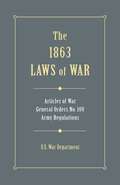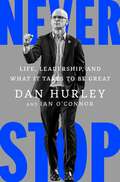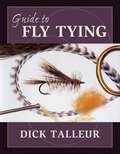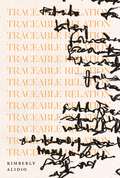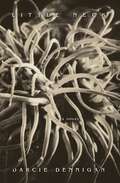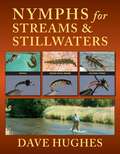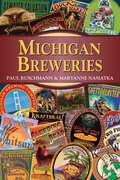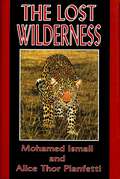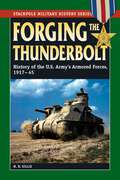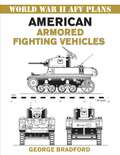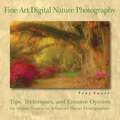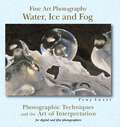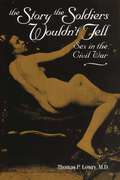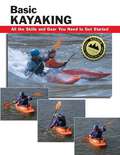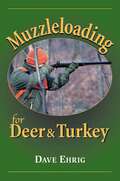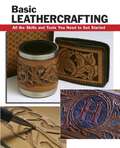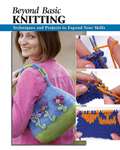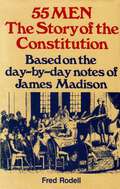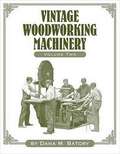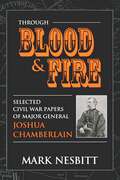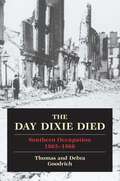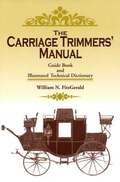- Table View
- List View
Photographer's Guide to Yellowstone & the Tetons
by Joseph K. LangeRevised and updated edition with new photos and digital techniques. How to prepare for a photographic expedition through Yellowstone and Grand Tetons national parks. Includes products and services section to assist in planning a trip.
Bloodlust: Bloodlust; Initiation (Vampire Beach #1)
by Alex DuvalTHE A-LIST BITES. Jason Freeman is stoked when his family relocates to exclusive DeVere Heights, Malibu. The in-crowd at his posh new high school is surprisingly friendly -- soon Jason's hitting all the best parties. He even meets the token hot-but-unattainable girl. Determined to enjoy his almost postcard-perfect new life, Jason tries hard to ignore the many strange things going down in DeVere Heights. But then a girl washes up dead the morning after one off-the-hook party -- and with no explanation but a suspicious-looking bite mark. Now Jason has to admit that what you don't want to know can hurt you.
Making Jewelry from Polymer Clay
by Sophie ArzalierUse texture, materials, canes, and mixed techniques to create thirty different projects in a variety of modern, sophisticated looks. Techniques for making interesting beads and pendants as well as projects combining these beads into complete sets of jewelry. How to make necklaces, bracelets, rings, earrings, pins, and more.
1863 Laws of War
by U.S. War Department• The "rules of warfare" and "government of the army" as they existed in the American Civil War• All 101 Articles of War as amended through June 1863 including the famous Lieber Code (General Orders No. 100), directed by President Lincoln, which expanded the laws of land warfare and General Orders No. 49 on the granting of paroles• Copious extracts from the Revised U.S. Army Regulations through June 1863This compendium of laws and rules is a testimony to America's reverence for the rule of law as well as its high regard for "civilized" behavior on the battlefield. The Articles of War were normative rules covering military duty and punishments allowed for violations. The Lieber Code was a new and profound law for the conduct of armies in the field, to include humane treatment of prisoners and protection of property and civilians. It had a profound affect on the evolution of the laws of land warfare in use today. Army Regulations, on the other hand, dealt with the administration and management of the army-from personnel assignments to supply and recruiting operations-all three sets of rules were used by both the Union and Confederate armies.An essential reference for students, historians, writers, reenactors, and those interested in how our Civil War armies operated.
Never Stop: Life, Leadership, and What It Takes to Be Great
by Dan Hurley Ian O'ConnorNEW YORK TIMES BESTSELLER Dan Hurley is one of the most famous head coaches in America today—in any sport. He returned the UConn Huskies men&’s basketball team to their rightful place among the nation&’s elite, winning back-to-back NCAA Championships, and he did it with uncommon passion. His on-court eruptions, his face-offs with refs and even fans, are legendary.But behind all the winning and swagger is a story of intense, harrowing struggle. Son of a revered high school coach, younger brother of a college basketball icon, Hurley spent years fearing that he&’d just never measure up. He suffered through several bouts of anxiety and deep depressions. As a young player he was ridiculed, as a young coach he came up short. Many people would have given up. But through relentless will, and Jersey City grit, he reached the summit, becoming such a shining success that the Los Angeles Lakers came calling. For anyone needing a boost or a blast of inspiration, for anyone leading a team or wanting to up their game, for anyone chasing greatness, Hurley&’s story, told in his unique no-BS voice, is a must-read.
Guide to Fly Tying
by Dick TalleurStep-by-step color sequences for more than 100 patternsAcclaimed tier and master teacher Dick Talleur presents the fundamentals and key techniques for tying all the popular patterns, with step-by-step color photos and explicit text showing every nuance of the process. This book builds on Talleur's classic reference, Mastering the Art of Fly Tying, one of the first to go beyond the simple recipe-photo format to provide detailed explanations of technique. That book taught a generation of fly fishers how to tie; Guide to Fly Tying offers the same scope and approach while incorporating the latest in materials, tools, and techniques.
Traceable Relation
by Kimberly AlidioA collection of linked essays and poems concerned with the vitality of art and writing in the wake of grief. At the intersections of poetry, sonic/ visual text, nonfiction, and arts writing, Traceable Relation portrays a writer’s practice within a lineage of aesthetic and practical sensibilities conveyed in the personal effects of her late father and the concrete tasks of communal mourning. In her ongoing practice of “speaking nearby” various works of film, sound installation and pop music, innovative, contemporary writing emerges from the diasporic arts of memory and survivance.
Little Neck
by Darcie DenniganLittle Neck is a feverish and hypnotic excavation of grief and inheritance, told from the naïve perspective of a girl abandoned in a cemetery as she unearths her sinister family history. Haunting and cinematic, Dennigan's second novel is set in a small New England town steeped in secrets. It follows the life of a girl who grows up tending graves under the guidance of a beloved groundskeeper. Her world unravels when he catches her exhuming a body, and she is sent to apprentice with the town's tombstone carvers. As the girl learns fragments of her hidden past, a dark family history begins to consume her. Little Neck explores themes of inheritance, desire, and grief, probing the question: Can we escape the mistakes of our parents, even when their identities are a mystery? With echoes of Ágota Kristóf, Marguerite Duras, and Marie Redonnet, Dennigan crafts a tragic, darkly humorous meditation on family and the secrets that shape us.
Nymphs for Streams & Stillwaters
by Dave HughesThe authoritative book on nymphs. Step-by-step instructions for 112 useful nymph flies. More than 900 photos of natural nymphs, their imitations, and steps in tying those flies.
Michigan Breweries (Breweries Series)
by Maryanne Nasiatka Paul RuschmannA guide to 66 breweries and brewpubs, with a history of brewing in the state and information about types of beer produced at each site, tours, food served, and nearby attractions. The authors both pick their favorite beer for each brewery.
The Lost Wilderness: Tales of East Africa
by Mohamed IsmailThis is the story of Mohemed Ismail's years in Kenya and Tanzania as a game warden and professional hunter. In this book Ismail chronicles the life experiences of five native Africans who worked with him during his years as a game warden as well as his own experiences as a professional hunter.
Forging the Thunderbolt (Stackpole Military History Series)
by M. H. GillieFeatures a detailed look at the career of Gen. Adna Romanza Chaffee, the "Father of the Armored Force." Careful study of the battles fought during and between the wars for the armored forces' very survival. Photos of the men and machines that made the American Armored Corps a legend.
American Armored Fighting Vehicles (World War II AFV Plans)
by George BradfordTechnical artist and military historian George Bradford has been producing detailed drawings of armored fighting vehicles for over thirty years. Based on meticulous research of actual vehicles, official photographs, factory specifications, and, in some cases, the original design plans, each drawing is rendered with great precision--and in exact scale--offering military enthusiasts and modelers an essential reference on these steel chariots of war.Filled with fine-scale drawings of America's tanks and other armored vehicles during the entire course of World War II. • M2 Halftrack• M3 Lee/Grant Tank• M3A3 Stuart Tank• M4 Sherman Tank• Staghound Armored Car• LVT Amphibious Tank• And dozens more . . .
Fine Art Digital Nature Photography
by Tony SweetThe latest digital photography techniques explained in concise detail. Includes more than 40 before-and-after photographs enhanced with digital techniques. Software screen captures illustrate how to adjust images for optimal results.
Fine Art Photography: Water, Ice & Fog
by Tony SweetIn stunning color, master photographer Tony Sweet shows how to create beautiful photographs of water in all its forms.
Story the Soldiers Wouldn't Tell
by Thomas P. LowryFirst book to cover all aspects of sexuality during the Civil War. Based on area original sources, including the soldiers' jokes, songs, letters, and diaries.
Basic Kayaking (How To Basics)
by Jon Rounds Wayne Dickert2005 National Outdoor Book Award Winner. A fully illustrated introduction to river kayaking with a full-color gear guide plus chapters on river safety and reading the water. Step-by-step instruction on essential techniques, including all major strokes and rolls.
Muzzleloading for Deer & Turkey
by Dave EhrigThe definitive handbook on hunting with black powder, with specific techniques for taking deer and turkey. Covers all types of guns, from flintlocks and breechloaders to modern in-line muzzleloaders and gives expert advice on sighting, cleaning, and loading your gun. Guidelines for storing and transporting guns, powder, and ammunition safely.
Basic Leathercrafting (How To Basics)
by Elizabeth LetcavageStep-by-step instructions and photos illustrate basic leathercrafting techniques: choosing leather, stamping and decorating, stitching and lacing, and finishing.
Beyond Basic Knitting (How To Basics)
by Leigh Ann BerryDetailed information that builds on basic knitting techniques. How-to instructions complete with color photographs. Includes essential skills review and knitting resources list.
55 Men (Stackpole Classics)
by Fred RodellHighly readable, insightful revelation of what the Founding Fathers intended when they drafted the Constitution First published in 1936 The 55 men who traveled to Philadelphia on horse and by stagecoach in the spring of 1787 as delegates to a Convention on the Articles of Confederation had been warned by the states that sent them to do nothing more than make a few changes in the flimsy articles. But when they went back to their homes, after working and debating through four long months of hot Philadelphia summer, they had done a great deal more: they had set down on paper the foundation of the United States. They had drafted the Constitution. What happened during the secret Constitutional convention? What did these 55 Founding Fathers actually say in the debates? Fred Rodell bases his book directly on the much neglected day-by-day notes which James Madison took during the Constitutional Convention and on the hastily scribbled papers of a few other delegates. In these frank recordings, the true story of the birth of the Constitution is found. 55 Men, The Story of the Constitution is a stirring drama of the 55 personalities who shaped a crucial moment in our country's history.
Vintage Woodworking Machinery
by Dana Martin BatoryHere is the second volume in Dana Batory?s series of guides to the major woodworking machinery manufacturers of the 19th and 20th centuries. Covered in this volume are Parks Machine Co., the Boice-Crane Co., Baxter D. Whitney & Son, and Crescent Machine Co. All these manufacturers built a full line of woodworking machines, but most became especially known for a particular group, e.g., Boice-Crane produced medium size and capacity machines that were ideal for home shops, school shops and small business woodworkers; Whitney was famous for its thickness planers and spindle shapers, as well as for a large collection of cooperage machines; and Crescent won renown for its bandsaws and table saws, and for its Universal Wood-Worker, a combination machine. As in his first volume, the author provides a history of each manufacturer, as well as a description of the evolution of its product lines over the years. Accompanying the histories are many illustrations taken from the catalogs of the period. This is a mine of information about old woodworking machines and the companies that made them.
Through Blood & Fire
by Mark Nesbit Joshua Lawrence Chamberlain• Includes all of Chamberlain's known wartime letters• Shows his transformation from college professor to major general• Original writings placed into context by historian Mark NesbittIn July 1862 Joshua Chamberlain, a family man and respected professor at Bowdoin College in Maine, joined the fight to preserve the Union. His wartime service was exemplary; he is perhaps best remembered for his outstanding leadership at Gettysburg. At all times, however, he fought bravely and well, even at Petersburg in 1864 where he received the wound that was to torment him until his death in 1914.Throughout his time in the field, Chamberlain wrote letters of recommendation to his superiors, letters of condolence to the families of soldiers killed while under his command, and letters to his family at home. All are well written, revealing the professor's educated background and elegant prose. Nesbitt's notes set the scene, place Chamberlain's writings within the larger context of the war, and make clear the General's sterling character and his sacrifices for the country he loved.
Day Dixie Died: The Occupied South, 1865-1866
by Thomas Goodrich Debra GoodrichAs the North celebrated the end of the Civil War, the people of the South, particularly of recently fallen Richmond, mourned. The South was about to enter a period of extreme turmoil reconstruction. The Union, though preserved, would not easily be healed. Starting with Lincoln's assassination and continuing up through the harsh realities of occupation through the summer of 1866, authors Thomas and Debra Goodrich trace the history of reconstruction in the south-the death, destruction, crime, starvation, exile, and anarchy that pervaded those grim years.
Carriage Trimmers' Manual: Guide Book and Illustrated Technical Dictionary
by William N. FitzGeraldThis book was written in 1881 by William N. FitzGerald, a veteran of the carriage industry, was the most comprehensive addition to trade literature on the subject at the time of its publication. Rare, hard-to-find and long out of circulation, it is now back in print to inspire a new generation of carriage enthusiasts. For curators and carriage collectors, this in-depth and practical book is an invaluable resource that provides descriptive text and illustrations of numerous carriage interiors: from the everyday model to those suited for royalty. Furthermore, the book describes the complexity of materials leathers, silks, laces and range of skills (upholstering, tufting, stitching and binding, cutting enameled leathers, making leather sockets, welting, fabric selection, etc.) required for this branch of the carriage trade. It also includes recipes for cleaning, oiling and blacking leather, polishing metals and restoring ivory, among others. For conservators, restorers and dealers in antique furniture (especially upholstered 19th century furniture), this is an indispensable guideline and instructive manual for the upholstery trade in general. Tool collectors will benefit from the descriptions and illustrations of trimmers' tools such as stuffing sticks, round knives and shears.



